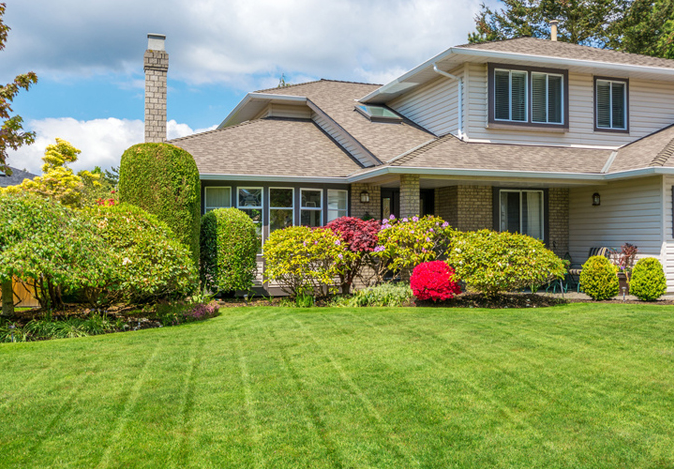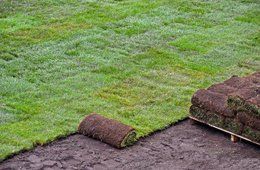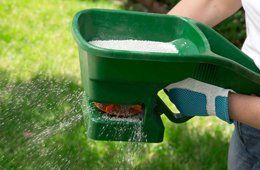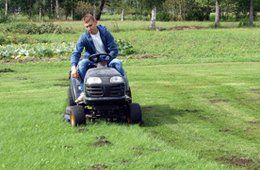6011 Atlanta Hwy Flowery Branch, GA 30542-5302
We proudly serve the entire state of Georgia.

Watering for Newly Planted Sod
When you've recently planted sod, the best time to water it is in the early afternoon. This will allow the sod to stay moist throughout the rest of the day, evening, and early morning.
Frequent, light watering helps the sod spread more quickly during establishment, but will eventually cause a shallow root system and cause the sod to suffer during light droughts. Try this technique daily for the first two weeks. You should water frequently and lightly, then as the sod matures, change to less frequent, deeper watering.
Watering for Established Sod
For established sod, the best time to water it is in the wee early morning hours, giving it time to dry, and reduce the amount of bacteria and fungi growth hours. When watering, make sure you're watering deeply, and infrequently. This will result in a healthier, more attractive lawn.
Sod Fertilization
Zoysia grasses only require three feedings a year. In the Spring, apply fertilizer with weed control. During the summer months, apply fertilizer with insect control, and in the early fall, just apply the fertilizer.
Centipede grasses require three feedings a year. Crabgrass preventer should be applied in early spring, if necessary. Later that same season, apply fertilizer with weed control, and in the summer additional fertilizer with insect control.
Bermuda grasses need four feedings per year. In the early Spring, make sure to apply crabgrass preventer, if necessary. Spring requires lawn fertilizers with weed control. Between June and August, apply fertilizer with insect control. Early fall calls for just fertilizer.
Fescue grasses require the most feedings per year at five. In early Spring, apply a fertilizer with crabgrass preventer. Between April and June, you should apply fertilizer as well as a weed control. The summer requires regular fertilizer and some insect control. In early Fall, aim to apply regular fertilizer and late Fall, winterizing fall fertilizer respectively.
Proper Mowing For Sod
There is a technique to take care of your lawn. It's very important to know the recommended length in which to cut the sod at. Cutting it often enough will prevent scalping. Proper mower maintenance is important as well to ensure that your lawn is getting the best care.
Make sure you cut your sod often enough to remove no more than a third of the surface in a single mowing. The cutting heights vary depending on your type of sod.
Zoysia sod should be mowed at 2 inches. Before mowing, set your cutting height to 1.5 inches (3.7 cm). For centipede grasses, mowing should begin at 3 inches. Set your mower's cutting height to 2 inches.
Bermuda grasses have a shorter cutting height at 1.5 inches and your mower's cutting height should be set at 1 inch. Lastly, for fescue grasses, you can allow them to grow 3.25 inches before mowing. It's important to remember to set the cutting height to 2.5 inches.
To avoid an unattractive and dry lawn, make sure to water the lawn well a day or two prior to mowing. Maintaining your mower blades is important. Sharp blades will “clip” the grass, while dull blades “chew” the grass, leaving it looking unhealthy and unattractive.
Allsouth Sod Depot, Inc. has less expensive sod options and the largest selection in the area. If you need to have your order delivered, our team has trucks available to deliver, and the product is always fresh upon delivery.



